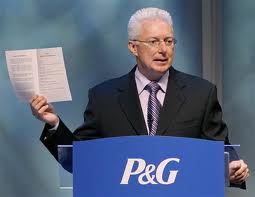Strategy: Five Components
A.G Lafley is justifiably famous for taking over Procter & Gamble (P&G) and converting an insular company into a customer-centric, outward-looking culture known for a string of successful innovations. When Lafley became CEO in 2000, innovation was driven by thousands of in-house R&D designers, researchers, and engineers. They created neat stuff and “pushed” it to customers. Partially as a result, P&G’s success rate with new products and brands hovered around 15%. The R&D teams focused internally; only about 10% of new products came from outside the company.
Lafley essentially turned the company inside-out by putting the customer at the head of the innovation process. P&G called it Connect + Develop and emphasized collaboration with other departments, customers, and even outside research organizations. Lafley changed the culture from “not invented here” to “proudly found elsewhere”. P&G signed more than 1,000 collaborative agreements with outside organizations. It was a fundamental cultural change and the results were spectacular. According to a report from A.T. Kearney, “During Lafley’s tenure, sales doubled, profits quadrupled, and the company’s market value increased by more than $100 billion”.
Now Lafley has written a book, Playing to Win: How Strategy Really Works, with Roger Martin, the Dean of the Rotman School of Management at the Univeristy of Toronto. Martin was Lafley’s “principal external strategy advisor”. In addition to Martin, Lafley built a brain trust of outside thinkers including designers and business professors. The eclectic nature of the group created many different “idea collisions” that generated process innovations as well as product innovations.
I’m sure that I’ll write a lot about the book in the future but it’s not quite out yet. It debuts in February. Today, I’m depending on the report from A.T. Kearney and a lengthy review from The Economist. One of the key insights is that P&G followed a strategy composed of five elements, each designed to help managers make the right decisions. These are:
- What does winning look like? What are we aiming for and what information do we look for along the way to help us understand if we’re making progress? Do we seek global domination, regional, or local?
- Which markets should we play in? Of course, this also implies another question: which markets should we ignore (or exit)? How do we determine which is which?
- How do we win? What’s our distinctive strategy in each market and category?
- What are our strengths and weaknesses and how do we deploy them in each market, against each competitor?
- What needs to be managed for the strategy to succeed? Of course, the inverse of this question is what doesn’t need to be managed? The Economist reports that one of Lafley’s “most important innovations was a slimmed-down strategy-review process … [that] replaced needlessly sprawling bureaucratic meetings….”
It’s a good story and an intriguing look at strategy. Unfortunately, it doesn’t have an entirely happy ending. The Economist reports that P&G has “stumbled badly” since Lafley left in 2009. Similarly, Martin’s consulting firm “got into financial difficulty and has been sold at a discount.” Still, the questions are relevant to any company’s strategy and the story is intriguing. I’ll report more soon.
One Response to Strategy: Five Components
-
Pingback: Systems Thinking versus Design Thinking | Travis White Communications
